|
|
|
|
|
|
Natural
History: Native Plants
|
|
|
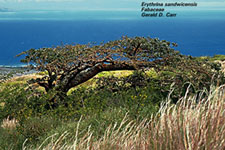 |
In Native Plants , we will discuss
the dispersal of native plants to Nawiliwili Bay, the kind of
physical environment they found, and the types of ecosystems
(living things interacting with the physical environment) that
developed. In coastal plants, lowland dry and mesic forest,
and the wet forest, we will discuss the dominant (most common)
plants of each zone. |
|
|
|
All the graphs,
maps, and charts, except the 500' contour map, in
Native Plants are from Atlas
of Hawai‘i Third Edition, by
Sonia P.
Juvik; James O. Juvik; and Thomas R. Paradise. |
|
|
| Because Hawai'i is more
than 2,000 miles from the nearest continent, native plants could
only have arrived by long distance dispersal. To the right are
estimates of how plants were able to get here. |
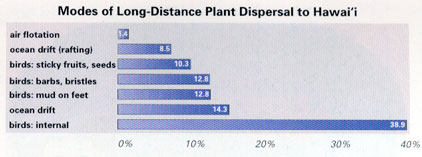 |
|
|
|
|
|
The ancestors of native birds and
plants came from different land masses surrounding the Pacific
Ocean. Once they arrived, they adapted to the new environments
and began to change. 90% of the 1000 or so native flowering
plants and 70% of the 150 or so native ferns have changed so
much that they are endemic (found only one place on the planet)
to Hawai'i. (Atlas of Hawai'i) |
|
|
|
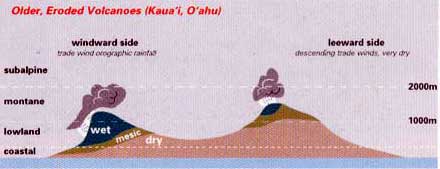 |
In Hawai'i, the type of ecosystem is determined by three factors:
elevation, the amount of rainfall, and the dominant plants.
|
|
|
|
Any area below 3000 feet is considered a lowland, or a coastal
zone. To the right, the blue contour line is drawn at 500 foot
intervals. Most of the ahupua'a of Nawiliwili Bay are below
500 feet in elevation The exceptions would be Haupu Ridge, Kilohana,
and the western mountains of Ha'iku. Where would the 3000 foot
contour line be? |
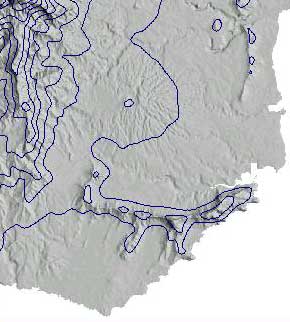 |
|
|
|
|
|
There are three categories for the
amount of rain. They are dry - less than 50 inches a year; mesic
(moist ) - from 50 to 100 inches a year; and wet - more than
100 inches per year.(Atlas of Hawai'i) We can see in the chart
above that most of the ahupua'a of Nawiliwili Bay fall into
the mesic. Some portions of the western border of Ha'iku qualify
as wet. |
|
|
|
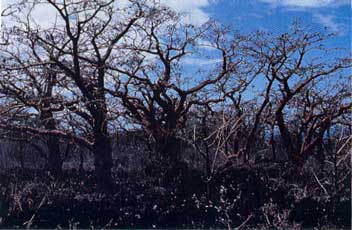 |
There are six types of
dominant vegetation considered in Hawaiian ecosystems:
Forests and woodlands are basically trees.
Shrublands are branched shrubs
> 3.3 feet.
Dwarf Shrublands are shrubs< 3.3 feet
Grasslands are covered by grasses and sedges.
Herblands are small, non woody plants.
Deserts have very few plants.
(Atlas of Hawai'i) |
|
When we call this a lowland mesic
forest - you know what we mean. Photo by Sam Gon III from Atlas
of Hawai'i. |
|
|
|
|
|
|
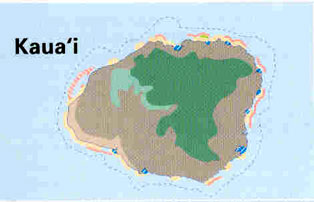 |
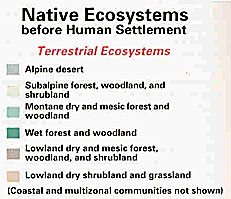 |
|
|
Native ecosystems are determined
by their elevation, the amount of rainfall, and the dominant
plants. Lets look at the native
coastal plants of Nawiliwili Bay. This is the area Hawaiians
called ko kaha kai. |
|
|
|
|
|
|
|
|
|
|
|
|
|
|
|
|
|
|

